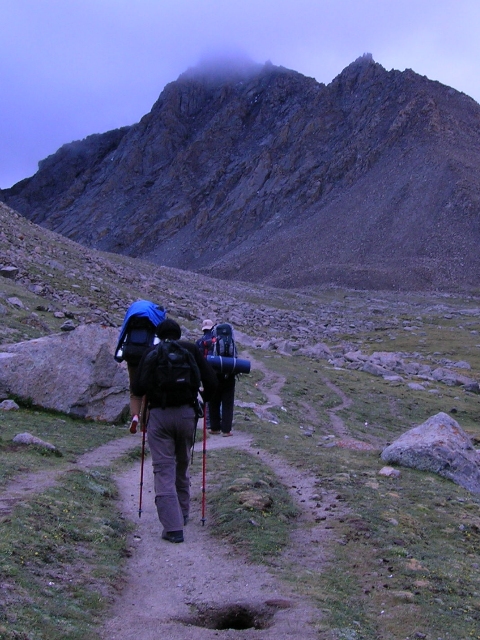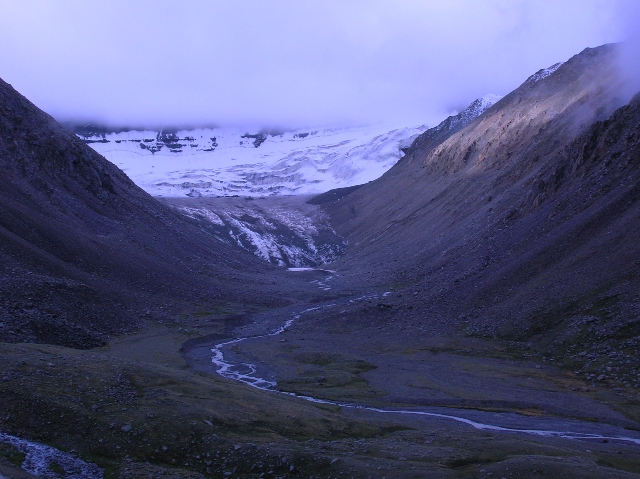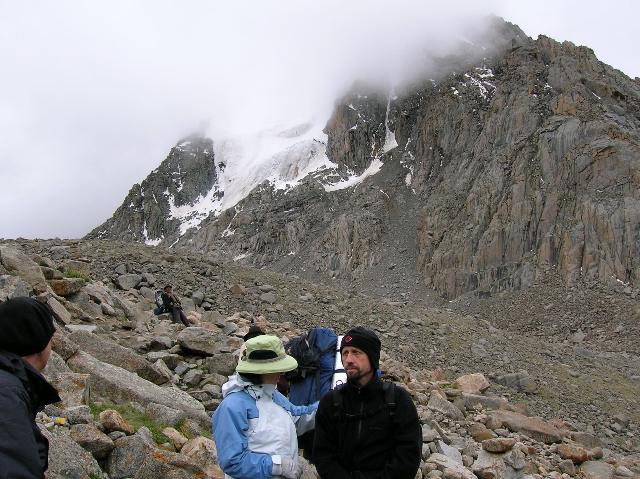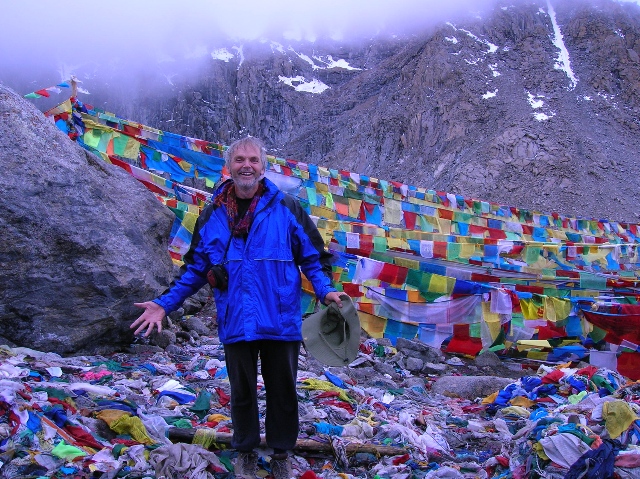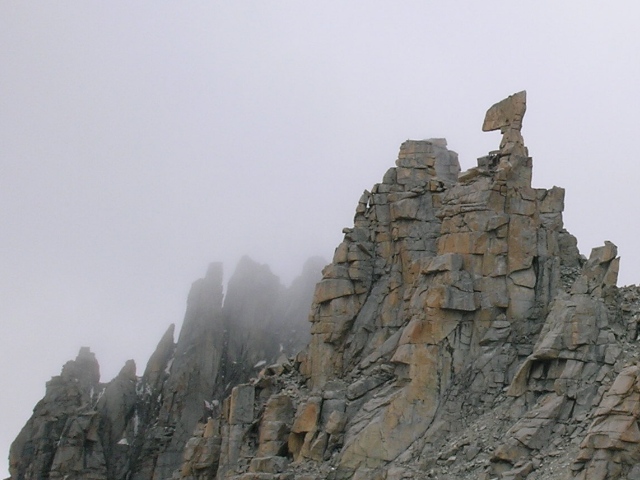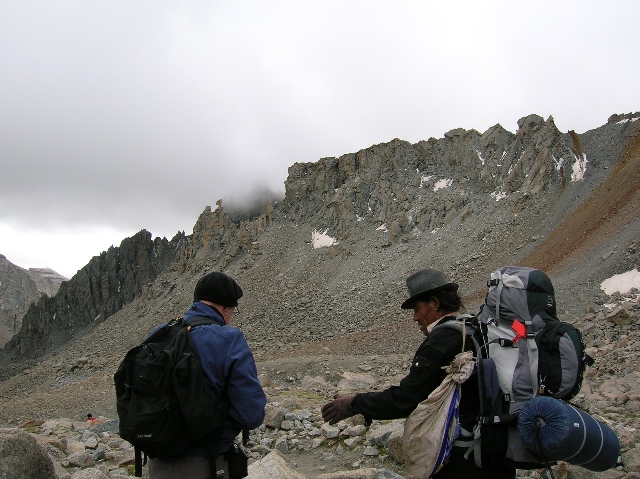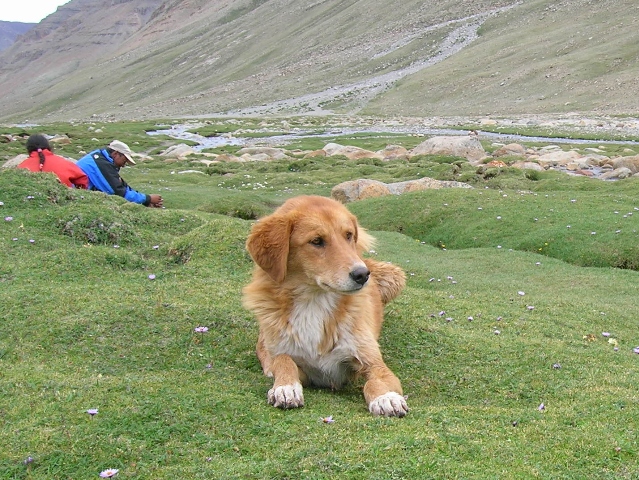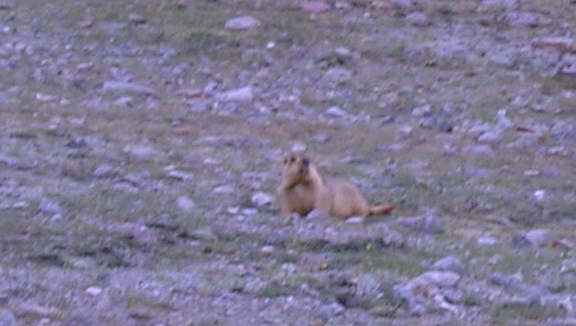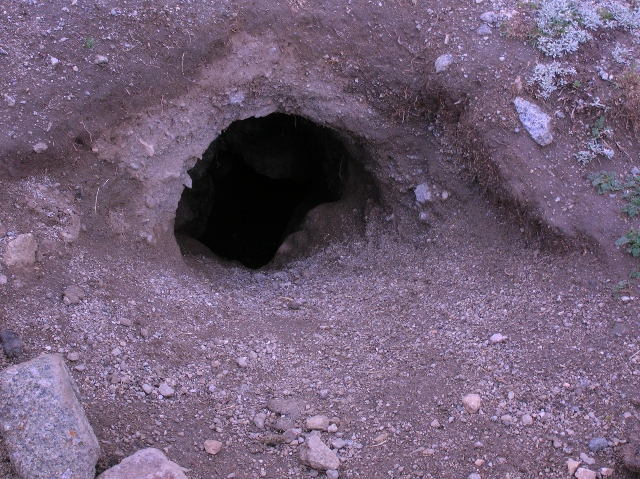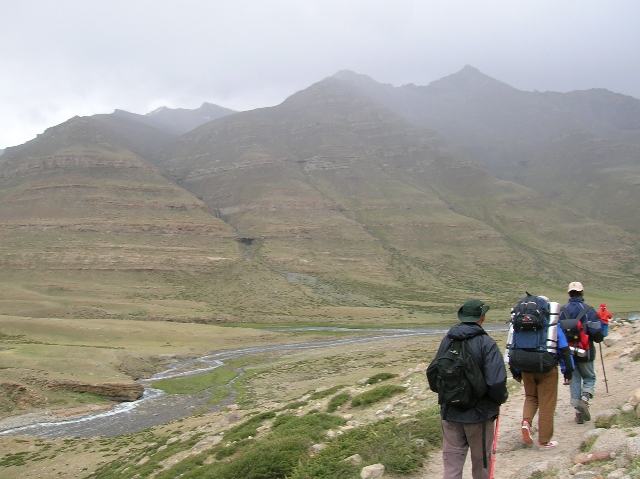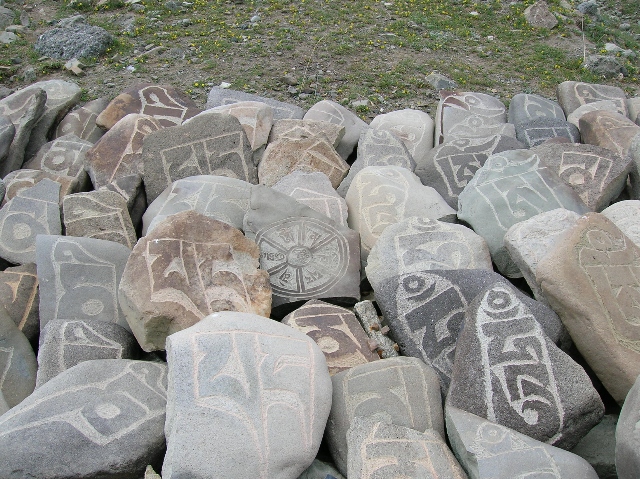| Prelude |
Day 17: Dzutrulpuk MonasteryWe get up before 7 the next morning since we have a long day ahead of us. I am the first to make it into the monastery kitchen, where I see the nun who normally works the hardest and wears the filthiest and most disreputable outfit. She is beautifully dressed in her full monastic regalia, sitting in an impeccable, serene meditation pose, reciting a lineage prayer from memory at high speed.I go back to Pablo and the Swiss couple and tell them. I'm surprised that their first reaction is that we should interrupt her, so she can get on with cooking our breakfast and we can be on our way. Strange that the person here who has the least time to devote to formal practice is the only one I see doing any. Strange also these disconnects between our spiritual aspirations and principles and our actual practice that interrupt the universal healing that true religion can bring. I am in no position to talk, of course. I have done some pretty bad things already on this pilgrimage, and I am planning to do some much worse things once I get back to Lhasa. In the end the others agree that we will pack our bags first and wait a few minutes for breakfast. After half an hour or so the nun serves us a quick breakfast of tea and tsampa and we are off before first light.
The climb is steep and unremitting. As we pass the glacier to the North-East of Kailas I am having trouble keeping up.
I constantly fall behind, red-faced and panting. I catch up only at the ends of breaks when everyone else is ready to move on, so I never get a break myself. After a couple of hours we reach the Shiwa Tsel, or Dakini Charnel Ground. This is a place to abandon your past and to honor those you know who have passed on. Pablo does a brief ceremony for the soul of his deceased mother, and I do a more extended practice - the White Feast of Chöd in which I offer my body for the benefit of all beings, followed by brief ceremonies for dead relatives and friends of mine and of people I know. I finish by burning relics of the departed and a lock of my own hair. Some Tibetans doing similar practices look on approvingly, and a dog comes and lays himself down peacefully in my cross-legged lap. All this takes time - at least half an hour. When I finish my practice my party is nowhere to be seen, and I have to guess at the correct route. It seems unlikely that I will catch them up at my present pace, but eventually I do, though only by pushing myself beyond my normal physical limits. I have already spent too much energy before the hardest part of the climb. I learn that the Swiss were so disturbed by the atmosphere of the Shiwa Tsel that they absolutely refused to wait anywhere near it.
Shakespeare was many years younger than I when he wrote this:
That time of year thou mayst in me behold I have already lived longer than him and so many men and women wiser and better than I - and to what end?
We head down, passing a sacred (and frigid) lake to our right in which pilgrims are supposed to bathe. I remember this fact but am not even close to acting on it.
This rest stop reinvigorates Pablo, who on our last descent was seriously wondering whether he had it in him to go on. From this point through the end of the trip, however, he will mostly be leading our way. As we turn into the main valley something happens that finally shows me what is so special about the Tibetans. Our 'cute' dog sees a marmot and dashes straight for it, seizing it around the midsection in its jaws to shake and crush it to death.
The marmot is still alive and its skin appears unbroken, but it seems to have suffered serious internal injuries. It lies there breathing in fitful gasps, its legs feebly twitching, and seems unlikely to survive. My fellow Westerners have pretty much written this animal off and are relatively unconcerned about its fate, but all the Tibetans feel an urgent need to do something, and so do I. I reach forward as if to pick the marmot up and carry it to its burrow, but Dorje tells me not to - that these animals carry serious contagious diseases.
All this takes over half an hour. The other Westerners and a couple of the porters move on after ten minutes or so, whereas I wait until I see that there is nothing more I personally can do. Dorje waits even longer, until he has thoroughly checked that the dog has really lost the scent, so we both have some catching up to do. I am already very impressed with the Tibetans so far, of course, but it is when Dorje catches up to me that he really blows my mind. The dog is trotting along beside him, looking up at his face with an appealing wide-eyed expression as if nothing had happened. My initial affection for this dog has turned to something bordering on disgust, but Dorje's feeling has not changed at all. He has shouted and screamed at this dog, chased after it with a stick, and done everything he can to frustrate his plans, but everything he has done has been out of compassion - just as much for the dog as for the marmot. And so he can walk companionably alongside the dog, pausing every once in a while to look down, smile, and pat it gently on the top of the head.
So finally we trudge our weary way up to the monastery, not because we want to imbibe the sacred atmosphere of Milarepa's holy shrine, but simply because we think if may offer a better deal on accommodation. We break out the cards and play 'Shithead' in the monastery kitchen until Dorje gently reminds us that is a religious establishment, not a youth hostel (something we are constantly forgetting). The sun sets and it's time for an early night. I am so exhausted that I have not a single picture of the monastery. |
